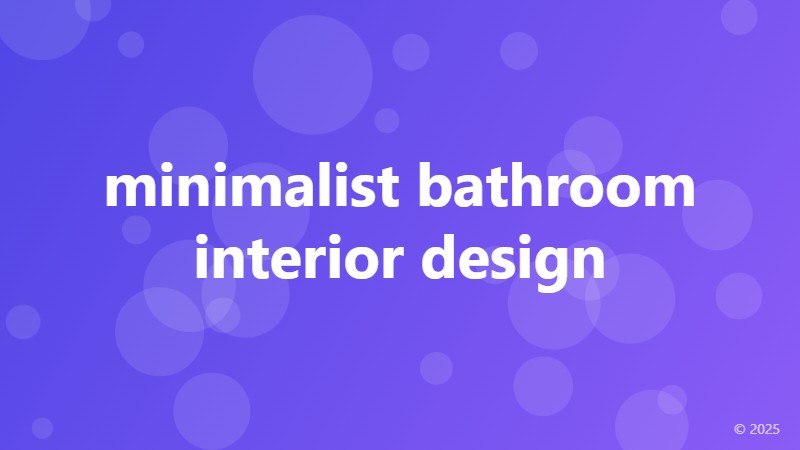minimalist bathroom interior design

The Beauty of Simplicity: Embracing Minimalist Bathroom Interior Design
When it comes to bathroom design, many of us tend to focus on grandeur and opulence. We think that more is more, and that a bathroom should be a lavish oasis that screams luxury. But what if we told you that sometimes, less is more? Minimalist bathroom interior design is a trend that's been gaining popularity in recent years, and for good reason.
A Space for Relaxation
A minimalist bathroom is not just about aesthetics; it's about creating a space that promotes relaxation and tranquility. By stripping away clutter and focusing on clean lines, simple shapes, and a limited color palette, you can create a bathroom that feels like a serene retreat. Imagine stepping into a bathroom that's free from visual noise, where every element has been carefully curated to promote a sense of calm.
The Power of Negative Space
One of the key principles of minimalist design is the use of negative space. By leaving empty space around and between design elements, you can create a sense of breathability and flow. In a bathroom, this can be achieved by using a limited number of decorative elements, and by choosing fixtures and fittings that are sleek and unobtrusive. The result is a space that feels spacious and airy, even in small bathrooms.
Monochromatic Magic
A monochromatic color scheme is a hallmark of minimalist design, and it's particularly effective in a bathroom. By choosing a single color or a limited palette, you can create a sense of cohesion and calm. White, gray, and beige are popular choices for minimalist bathrooms, but you can also experiment with bolder colors like navy blue or emerald green. The key is to choose a color that you love, and to use it consistently throughout the space.
Functionality Meets Aesthetics
In a minimalist bathroom, functionality and aesthetics go hand in hand. Every element should serve a purpose, whether it's a sleek sink or a wall-mounted toilet. By choosing fixtures and fittings that are both functional and beautiful, you can create a space that's both practical and stylish. And with a focus on clean lines and simple shapes, you can ensure that every element works together to create a cohesive whole.
Getting Started with Minimalist Bathroom Design
If you're inspired to create a minimalist bathroom of your own, here are a few tips to get you started. First, start by stripping away clutter and excess ornamentation. Consider a simple, wall-mounted sink or a pedestal sink instead of a bulky vanity. Choose a limited color palette and stick to it, and don't be afraid to leave empty space around and between design elements. And finally, focus on functionality as well as aesthetics, choosing fixtures and fittings that are both beautiful and practical.
By embracing the principles of minimalist bathroom interior design, you can create a space that's both beautiful and functional. So why not give it a try? You might just find that less is more, and that a simpler bathroom is a more relaxing and rejuvenating space.